How a North Korean Disarmament Deal Might Look
There has been a surprising amount of secrecy on the details, partly because the Trump administration has limited the number of people involved, cutting off traditional routes of leaking.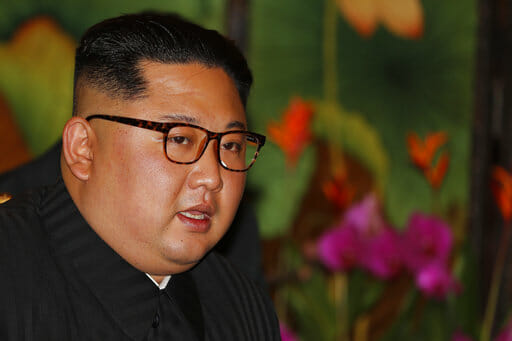 North Korean leader Kim Jong Un. (Wong Maye-E / AP)
North Korean leader Kim Jong Un. (Wong Maye-E / AP)
History will be made Tuesday when President Donald Trump and North Korean Premier Kim Jong Un meet in Singapore for an unprecedented summit—no meeting between the leaders of these two countries has ever taken place. The transition from the threats of war and insult-hurling that defined what constituted “relations” to the current atmosphere of mutual respect—even admiration—has been as dramatic as it has been head-spinning. It was barely two weeks ago that the summit was cancelled due to an impolitic exchange initiated by national security adviser John Bolton and Vice President Mike Pence, who stated that the model America was drawing upon as a template for North Korea to follow was that of Libya, which gave up its weapons of mass destruction in 2002-2003, only to have its government overthrown as part of a U.S.-led intervention in 2011, resulting in the particularly brutal murder of the ousted dictator, Moammar Gadhafi.
North Korea vociferously objected to this characterization of its disarmament, reminding the United States that it possesses a viable nuclear arsenal that it is not afraid to use to protect itself. Trump, taking umbrage, announced that he would not attend the Singapore summit. But his announcement, delivered in the form of a letter, was surprisingly diplomatic, leaving open the possibility of the summit being reconstituted. North Korea followed by sending its spy master to the United States, where he hand-delivered a letter from Kim to Trump. After a photo op with handshakes and smiles on the White House lawn, the American president announced that the summit was back on—such is American diplomacy in the age of Trump.
Trump has gone out of his way to keep expectations of what will be accomplished in Singapore low, especially when it comes to the issue of any disarmament agreement, indicating that while he will insist upon the complete denuclearization of North Korea (something Secretary of State Mike Pompeo has said North Korea both understands and supports), the process of negotiating a disarmament agreement will most probably take place in phases. There has been a surprising amount of secrecy surrounding the actual disarmament aspects of this summit, attributed both to the sensitivity of the subject and to the fact that the Trump administration has limited the number of people involved in the pre-negotiations, cutting off the traditional routes of leaking that exist when large bureaucracies are engaged.
Any discussion of a disarmament agreement involving the elimination of North Korea’s nuclear weapons, as well as any other capabilities, such as uranium enrichment, plutonium production, and ballistic missiles and associated manufacturing infrastructure, would be purely speculative. However, Trump’s precipitous decision to withdraw from the Iranian nuclear agreement provides an indirect indication that whatever form a prospective North Korean disarmament agreement takes, it will have to contain robust verification procedures that, given the level of intrusiveness Trump has demanded of an acceptable Iran nuclear agreement, may prove problematic.
In principle, arms control agreements and their associated verification mechanisms are reasonably straightforward. An objective is agreed upon, the various components for which elimination and/or monitoring comprise the objective are identified, the inspected party provides a declaration that lists in total the items, activities and locations of interest, and a mechanism of verifying the desired outcome (destruction, dismantling, demilitarization, monitoring) is defined, organized and implemented. In the case of North Korea, at least one objective already has been identified—denuclearization. What is not known is what “denuclearization” constitutes. At its most basic, denuclearization would involve the dismantling of North Korea’s actual nuclear weapons. North Korea is estimated to possess at least 60, and possibly many more. These weapons would have to be declared in their totality, locations identified, a mechanism of dismantling defined and a means of disposing of the weapons-grade nuclear material agreed to.
Nuclear weapons have been eliminated under prior disarmament agreements. The bilateral arms reduction agreements between the U.S. and Russia have allowed for nuclear material used in dismantled weapons to be stored in “reserve.” This would not be an acceptable solution for North Korea—both the U.S. and Russia were permitted, under the terms of their agreement, to retain a nuclear arsenal. North Korea will not be allowed to do so, so the nuclear material will need to be disposed of. There are precedents for this: The elimination of South Africa’s nuclear weapons, and those of Ukraine, Belarus and Kazakhstan all involved the removal of all fissile material from the territory and control of the disarmed party.
The simple elimination of North Korea’s declared nuclear arsenal would represent the most basic measure that could be taken to meet the definition of denuclearization. However, it is unlikely that the United States will agree to such a limited agreement. More realistically, it will require North Korea to give up both the nuclear weapons and their means of production, inclusive of any program dedicated to the manufacture of fissile material, specialized high explosives, weapons assembly and weapons testing (North Korea, in a show of good faith, claims to have destroyed its sole nuclear weapons test facility by blowing up tunnels used as part of the testing process. While this destruction was witnessed by international reporters, it has not been verified by any process agreed to in support of any potential denuclearization agreement).
The declarations involved in any such exercise would be extensive and extraordinarily complicated, comprising specific industrial facilities, specialized equipment unique to nuclear weapons manufacturing, dual-use equipment (that which can be used in support of a nuclear weapons program but also has legitimate non-nuclear use as well). North Korea could be expected to provide a breakdown of what materials and equipment used in its nuclear weapons program were produced indigenously, and what was procured from abroad. The latter has historically proven to be a sensitive issue, especially when the importation of sensitive materials fell afoul of international law or sanction (the case of Iraq and Iran both stand out in this regard).
The United States has linked the threat of North Korea’s nuclear weapons to an intercontinental ballistic missile (ICBM) capable of delivering a nuclear warhead to American soil. As such, it is highly likely that the United States will insist on the inclusion of North Korea’s ICBM capability in any denuclearization agreement. Both Japan and South Korea have indicated that they would like any such agreement to also involve North Korea’s short- and intermediate-range missiles, which pose a threat to their respective homelands. As with nuclear weapons, any agreement involving ballistic missiles would require a declaration of the numbers of missiles and their locations. Likewise, the industrial facilities involved in the manufacture of North Korea’s ballistic missile arsenal would have to be declared, along with all associated equipment (including a breakdown of what was produced indigenously, and what was procured abroad). The United States has a wealth of experience in framing agreements of this nature, both in terms of bilateral disarmament agreements with the Soviet Union/Russia and the elimination of the ballistic missile capability of Iraq (overseen by the United Nations) and Argentina (overseen by the Missile Technology Control Regime).
The elimination of the totality of North Korea’s ballistic missile programs would provide the most convenient mechanism of disarmament, allowing for the destruction of all missiles, regardless of range, and the dismantling of all manufacturing plants associated with ballistic missile production. However, it is unlikely that North Korea will agree to give up this capability upfront. Rather, there would be a phased approach toward ballistic missile disarmament, beginning with ICBM capabilities and progressing to intermediate-range missiles before culminating in short-range missiles. The last two phases would more than likely be linked to confidence-building measures on the part of the U.S. and South Korea, including the reduction and eventual elimination of joint military exercises, the drawdown of U.S. combat power in South Korea, the signing of a peace treaty formally ending the state of war on the Korean Peninsula that has existed since 1950 (when the Korean War started), and the U.S. providing specific security assurances to the North Korean government.
In the case of such a phased approach, any agreement would have to differentiate between permitted and proscribed activity, similar to the approach taken by the U.S. and the Soviet Union/Russia in the Intermediate-Range Nuclear Forces (INF) Treaty, in which short- and intermediate-range missiles were eliminated while ICBMs were permitted, and Iraq after the Gulf War, in which missiles with a range greater than 500 kilometers (310 miles) were prohibited, but Iraq was permitted to produce missiles possessing a range of less than 500 kilometers.
As difficult as all of this sounds, the most challenging aspect of any disarmament agreement is verification. While historically, arms control agreements have been put in place using nonintrusive technical means to verify compliance (the Strategic Arms Limitation Talks, or SALT, between the U.S. and Soviet Union relied exclusively on each nation’s so-called “national technical means,” or spy satellites and other remote intelligence-collection capabilities for this purpose), since the ground-breaking INF Treaty in 1988, almost every arms control and disarmament agreement or treaty has included a form of on-site inspection involving teams of inspectors gaining direct access to the locations and materials of interest.
There are basically two schools of thought on the issue of on-site inspection. The first is a treaty-oriented approach that defines the mandate of the conduct of inspections, detailing everything from team size and composition, notifications of inspection activity, how a team travels to and from an inspected site, what equipment can or cannot be carried by the team, how inspection equipment is to be used during an inspection, what information is allowed to be collected during an inspection, how this information is recorded, and who has access to inspection-derived information. The INF Treaty serves as the ideal case study in this regard and has influenced every on-site inspection-based arms control/disarmament agreement that has transpired since.
The other school of thought is derived from the United Nations experience in Iraq after the Gulf War, in which inspectors were given unprecedented access to virtually any site they deemed to be of interest, including the right to immediate access to facilities that were declared to Iraq only when the inspection team arrived at the gates of the facility to be inspected. There was virtually no limit to the number of inspectors who could be employed, the equipment they could carry and use, and the information they could collect and remove from Iraq.
History has shown that the Iraq model, while on the surface attractive from a verification standpoint, is inefficient from a disarmament standpoint. First and foremost, it is an imposed system of verification—the inspected party in this model was not a willing participant in the process. The conditions that led to the framing and implementation of the Iraq disarmament process was likewise unique—Iraq had been defeated in war and was compelled to accept the stringent disarmament terms, including the extreme verification measures, as part of a cease-fire agreement.
Complicating matters further, the disarmament process was a one-way street—only Iraq was required to be disarmed. There was no partner in disarmament for which issues of reciprocation could serve as a means of moderating inspector behavior (the INF Treaty, by contrast, relied heavily on reciprocation in implementing on-site inspection activity, ensuring that what was good for the goose was good for the gander). Finally, the Iraq model operated on a foundation that assumed mistrust: Each inspection was based on the premise that Iraq was cheating, and therefore every result—even a negative one—was interpreted in a manner that found Iraq to be noncompliant, even though history has shown that Iraq had fully complied with its disarmament obligation by 1995. As a model for verification, “anywhere, anytime” simply did not work.
Moreover, void of conditions that replicate Iraq’s defeat in 1991, the model of unfettered “anywhere, anytime” inspections as a means of verification is unrealistic. The experience of the Iranian nuclear agreement stands as a case point in this regard. While the United States and Europe insisted that the verification mechanisms used to ascertain Iranian compliance include “anywhere, anytime” on-site inspections, Iran refused, citing its sovereignty and legitimate national security concerns that existed unfettered by the terms of any cease-fire agreement. The result was a workable verification regime that melded existing nuclear safeguard inspection mechanisms used by the International Atomic Energy Agency (IAEA) along with challenge inspection procedures based on the INF model.
Trump walked away from the Iran nuclear agreement, citing as one of his main reasons the lack of “anywhere, anytime” on-site inspection provisions. Iran has made it clear that it will not accede to any verification regime that violates its sovereignty and legitimate national security. It is more than likely that North Korea will operate under the same premise, putting Trump and his team of negotiators in a policy bind. At the end of the day, the verification provisions of a North Korean denuclearization agreement will likely more resemble the Iran nuclear agreement than the Iraqi disarmament model, with the apparent policy contradiction being explained away by the Trump team noting that because their negotiators were involved, a North Korean denuclearization agreement can be trusted.
This is not to say that any verification regime modelled on the INF Treaty would not be robust. For any agreement to succeed, North Korea will have to sign off on the totality of its obligations, which will be listed in detail. Any on-site inspection regime will be tasked with verifying compliance with these obligations, most of which are technical in nature and lend themselves to a checklist approach that enables a detailed delineation of the obligations and responsibilities of both parties. Under such a detailed approach, cheating becomes very difficult. Moreover, on-site inspections are but one component of what will be a comprehensive verification process—national technical means and other remote intelligence collection capabilities will be employed to monitor North Korean compliance and can be used to trigger challenge inspections of the sort employed by both the INF Treaty and the Iran nuclear accord.
The final facet of what a North Korean denuclearization agreement could look like rests on who the parties are to such an agreement and what their respective roles would be. Likewise, there would need to be a mechanism and forum for resolving disputes, technical or otherwise, that are likely to arise during implementation of a North Korean denuclearization accord. Under the INF Treaty, a Special Verification Commission (SVC) was created for this purpose; the Iran nuclear agreement saw the creation of a joint commission composed of all parties involved. What form such a corresponding body tasked with overseeing a North Korean denuclearization agreement would depend on who was party to the agreement, and what legal authority underpinned its operation. For the INF Treaty, both the U.S. and Soviet Union signed and ratified the treaty, making it the law of the land in their respective countries. The SVC operated as a formal part of the treaty, with all the legal authority that involved.
The Iranian nuclear agreement was different in several regards. First, the verification aspects of the agreement were overseen by the IAEA, not the United States or any other state party. The controlling legal authority was the Nonproliferation Treaty (NPT), which gave the IAEA the mandate to carry out its safeguard activities in Iran, as well as other non-safeguard inspection activity permitted by the nuclear agreement. The United States, which had ratified the NPT and its safeguard provisions, did not ratify the non-safeguard aspects of the Iranian nuclear agreement—there was no legally binding treaty per se, only a complicated mechanism of executive certification to Congress. For this reason, while the Iranian nuclear agreement was negotiated, signed and implemented under the administration of President Obama, Trump had no legal obligation to remain a party to the accord.
To avoid a similar situation in a post-Trump era, the Trump administration has indicated that any North Korean denuclearization agreement will more than likely be enshrined in the form of a formal treaty requiring Senate ratification. If limited to just the United States and North Korea, such a process would be straightforward, but the Trump administration has indicated that it expects the IAEA to play a role in implementing a denuclearization agreement. However, the IAEA operates solely under the mandate given to it by the NPT; North Korea withdrew from the NPT in 2003. Any IAEA involvement in a North Korean denuclearization agreement would require Pyongyang to rejoin the NPT. Moreover, this involvement would create a similar situation as existed with the Iran nuclear agreement, in which the IAEA was called upon to implement safeguard inspections legally mandated under the NPT, and any unique inspection activity outside of the safeguards program as provided for in any agreement. This fact, in and of itself, would complicate the implementation of any mixed on-site inspection verification regime. It probably also would require a United Nations Security Council resolution authorizing this expanded mandate.
Even if the issue of IAEA involvement in a North Korean denuclearization agreement can be resolved to the satisfaction of all parties, there would still exist the possibility of non-nuclear inspection verification activities, at a minimum involving ballistic missiles, that would need to be undertaken to ensure North Korean compliance. This brings up the issue of additional state parties to any negotiated agreement. Both South Korea and Japan have a vested interest in the successful implementation of such an accord, as does China and, to a lesser extent, Russia. It is not known to what extent, if any, North Korea will permit inspectors from the United States, Japan and South Korea the kind of intrusive presence on its soil, let alone some of its most sensitive facilities, required for a meaningful verification process. Likewise, the extent to which the Trump administration would be willing to allow verification inspections to be carried out by non-American inspectors is unknown. The reality is that there will need to be a special on-site inspection activity created and properly mandated that incorporates personnel from all involved and interested parties.
It is possible to break a North Korean denuclearization agreement into two parts, with the first defining the four corners of what denuclearization entails, the second defining what verification measures would be implemented to oversee compliance with such an agreement. This would allow the United States and North Korea to sign an agreement that meets the technical and political requirements of denuclearization without burdening it with the minutia of verification. But in the end, the reality remains that a North Korean denuclearization agreement represents an extremely complex undertaking that will not be resolved in a single meeting, or even a dozen. To succeed, it will have to involve several other nations besides the U.S. and North Korea and international organizations in addition to the IAEA, including the possibility of new multinational on-site inspection activity.
Due to this anticipated complexity, many experts believe a North Korean denuclearization agreement is beyond the capability of the Trump administration, especially considering the extent to which the arms control bureaucracy has been allowed to dissipate through attrition and neglect. Others, including me, believe that the very fact that Trump is not encumbered by a bureaucracy programmed to be pessimistic and obstructionist when it comes to groundbreaking initiatives such as North Korean denuclearization gives these negotiations a fighting chance to succeed. At the end of the day, however, the ball is in Trump’s court. His credibility has been severely damaged by his precipitous decision to withdraw from the Iranian nuclear accord, both in terms of his ability and willingness to abide by the terms of a negotiated agreement and his hard-line stance concerning “anywhere, anytime” on-site inspections involving Iran, which has set potentially deal-breaking conditions for North Korea. But the mere fact that Trump is meeting with Kim is proof positive that this unconventional president, for whom there are apparently no limits or boundaries, may in fact have the moxie to pull off such an unprecedented undertaking.
Your support matters…Independent journalism is under threat and overshadowed by heavily funded mainstream media.
You can help level the playing field. Become a member.
Your tax-deductible contribution keeps us digging beneath the headlines to give you thought-provoking, investigative reporting and analysis that unearths what's really happening- without compromise.
Give today to support our courageous, independent journalists.

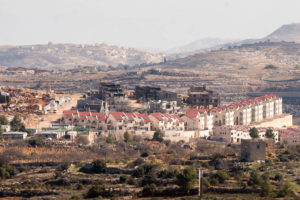
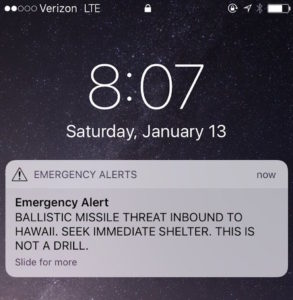

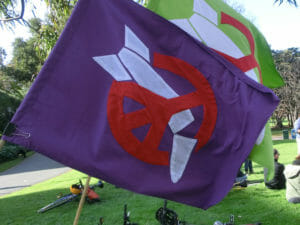
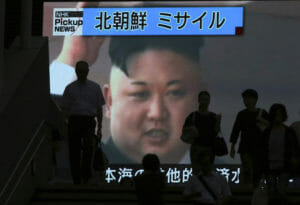


You need to be a supporter to comment.
There are currently no responses to this article.
Be the first to respond.